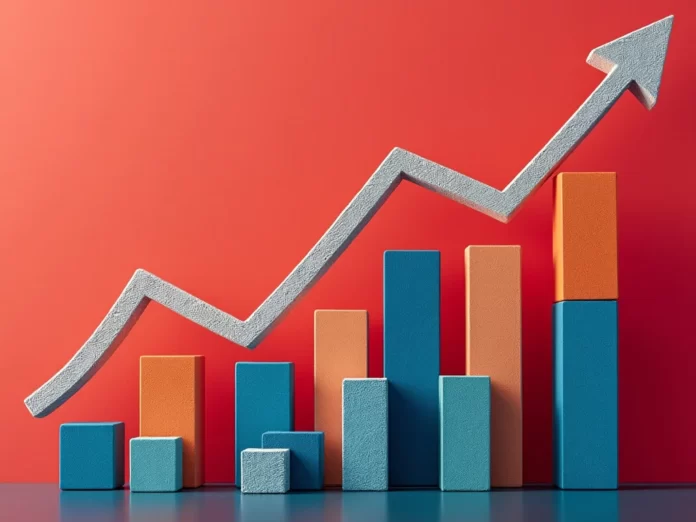The Asian Development Bank (ADB) has forecasted that Pakistan’s growth is projected to remain steady at 2.5% in 2025 and 3.0% in 2026, supported by the implementation of a reform program that should strengthen private investment.
In its Asian Development Outlook April 2025, ADB said that inflation in Pakistan is anticipated to plunge from 23.4% in FY2024 to 6.0% in FY2025 and 5.8% in FY2026. The fall will be driven by moderate domestic demand, declining global commodity prices, and a favorable base effect.
Reversing contraction by 0.2% in FY2023, Pakistan’s economy grew by 2.5% in FY2024, supported by tight macroeconomic policy. Economic and political uncertainty eased significantly with the formation of a new government in March 2024 and renewed support from international financial institutions. Inflationary pressures subsided, the Pakistan rupee stabilised as external conditions improved, and international reserves reached their highest level in two years.
ADB warned that Pakistan’s outlook depends largely on the success of ongoing economic reform. Economic reform has progressed considerably under an IMF Extended Fund Facility arrangement that began in October 2024, enhancing macroeconomic stability. For instance, agricultural income became taxable across Pakistan after all provinces successfully passed the Agriculture Tax Bill, 2025.
It said that the reform program implementation has been strong in several other areas, including the planned fiscal consolidation to durably reduce public debt, maintenance of sufficiently tight monetary policy to maintain low inflation, improvement of the energy sector viability, and implementation of Pakistan’s structural reform agenda to accelerate growth.
However, Pakistan still faces substantial vulnerabilities and structural challenges. Consistent policy implementation is thus crucial for building resilience and enabling sustainable and inclusive growth.
Key priority areas include consolidating public finances by broadening the tax base while increasing social spending and protection, strengthening external buffers, mitigating fiscal risks from state-owned enterprises, and improving the business environment to promote growth led by the private sector.
Growth in the subregion is expected to rise from 5.8% in 2024 to 6.0% in 2025 and 6.2% in 2026. In India, growth is projected to accelerate to 6.7% in fiscal year (FY) 2025 and 6.8% in FY2026.
Falling inflation, monetary policy easing, improved agricultural production boosting rural income, and more favorable fiscal policy including tax cuts for middle-income households will support domestic demand. Bhutan’s GDP growth is forecast to increase sharply to 8.5% in FY2025, from 5.5% in FY2024, driven by increased investment in hydroelectricity production and a surge in construction activity, before moderating to 6.0% in FY2026.
Growth in Nepal is expected to accelerate in both FY2025 and FY2026. Robust consumption supported by higher remittance inflows, moderate inflation, and increased private and public investments will underpin economic activity.
In contrast, political instability and supply bottlenecks will weigh on Bangladesh’s economy in FY2025. Sri Lanka’s economic recovery will continue this year and next, albeit at a slower pace. Consumption will remain muted as the purchasing power of households, which was eroded during the crisis, continues to be weak, with fiscal policy expected to remain tight, and while the resumption of debt servicing this year is expected to lead to currency depreciation.
In Maldives, growth will moderate in FY2025 and FY2026, despite continued solid contributions from tourism-related sectors.
In South Asia, inflation is expected to decline notably. The subregion’s inflation is forecast to decrease from 6.6% in 2024 to 4.9% in 2025, and further to 4.5% in 2026. In India, inflation is projected to moderate to 4.3% in FY2025 and 4.0% in FY2026, supported by easing food and global oil prices.
In Nepal, inflation is expected to ease to 5.2% in FY2025 and 5.0% in FY2026, mainly due to lower global oil prices and lower inflation in India, a key source of agricultural goods imports.
In contrast, while remaining within the central bank’s target range, inflation in Sri Lanka is expected to rise to 3.1% in 2025 and 4.5% in 2026, driven by higher demand from the ongoing recovery, higher electricity tariffs, and currency depreciation.
Meanwhile, the removal of blanket subsidies on food staples and utilities will exert upward pressure on prices in Maldives in 2025, with inflation forecast to moderate in 2026 as the impact of subsidy removals fades and global commodity prices are expected to decline.
























